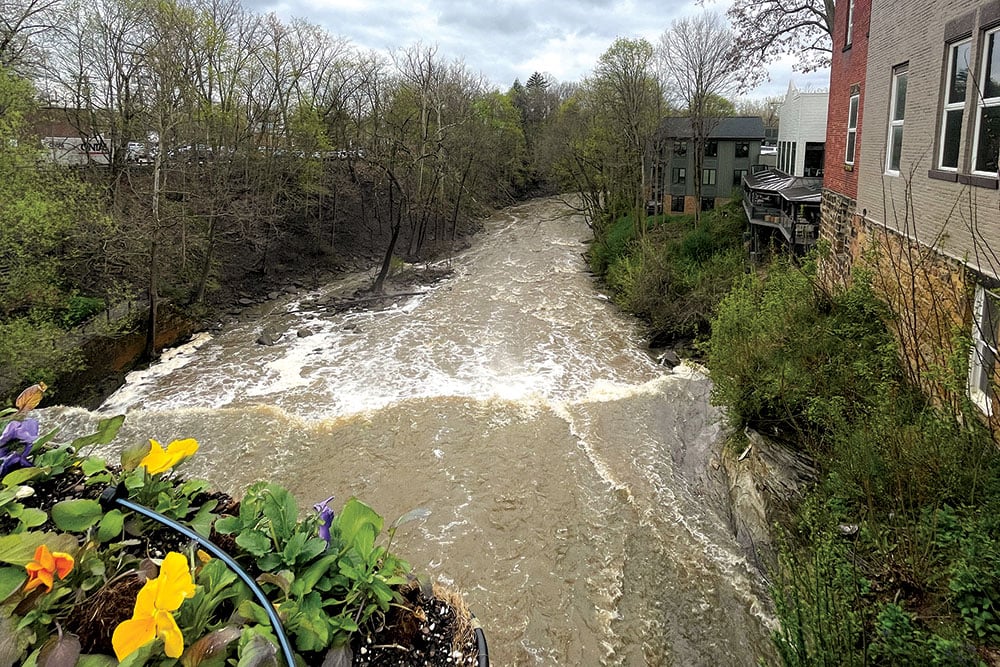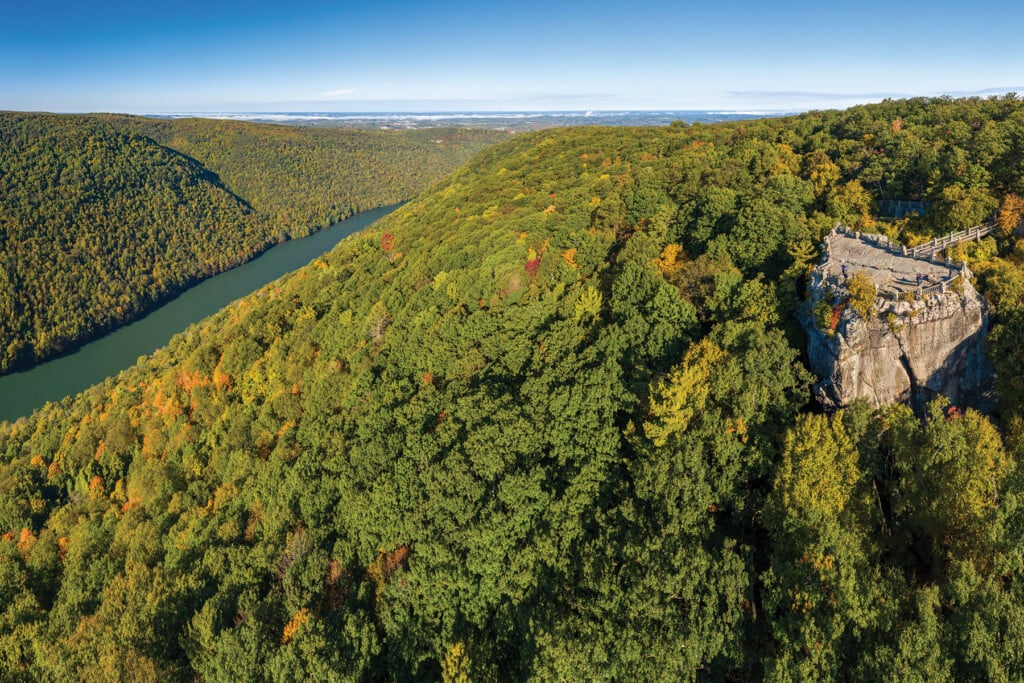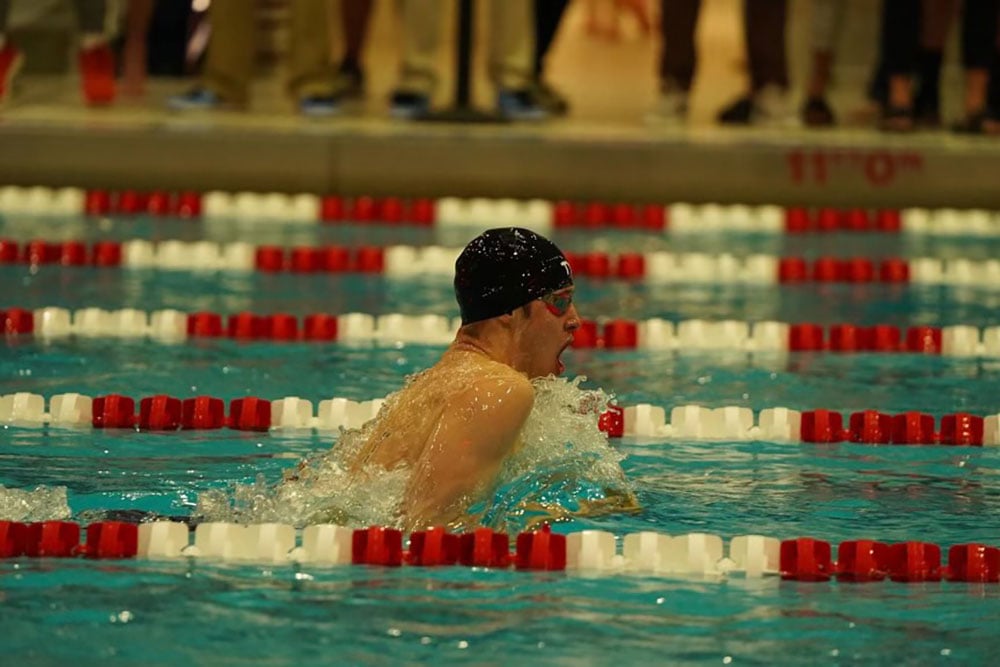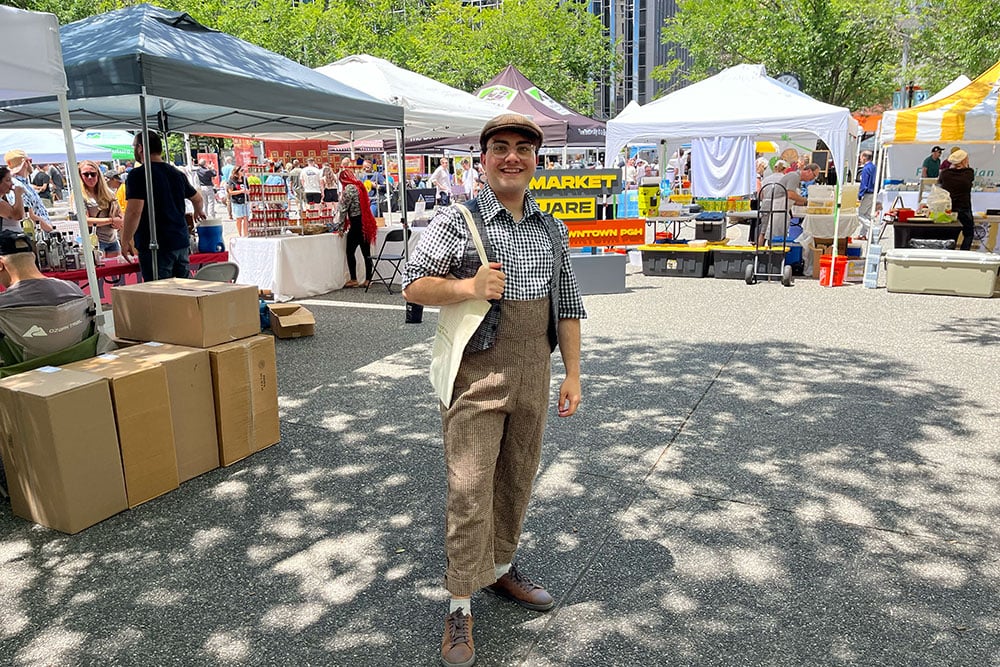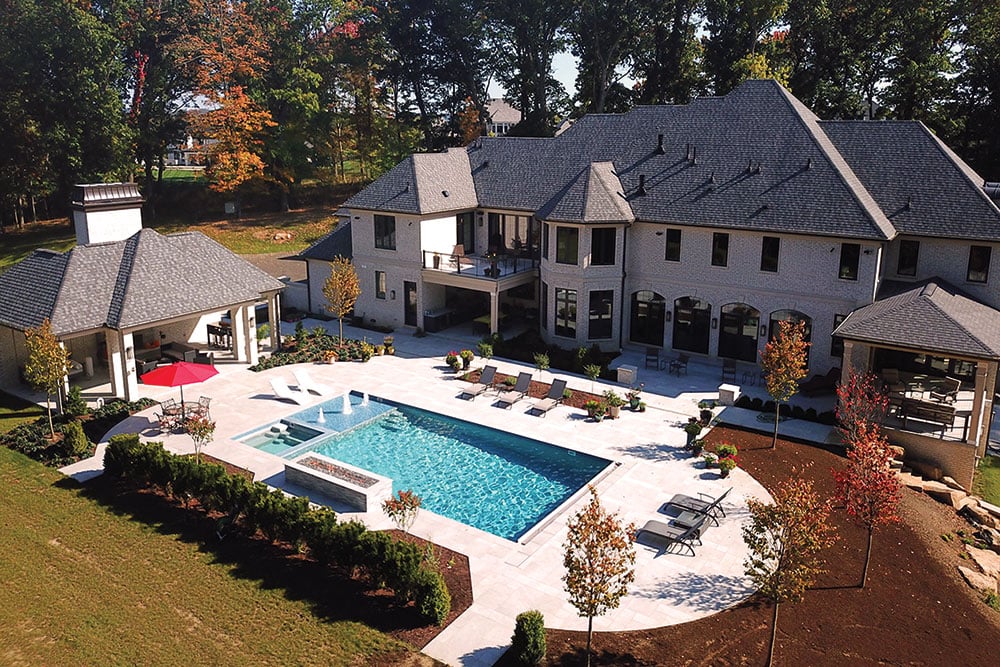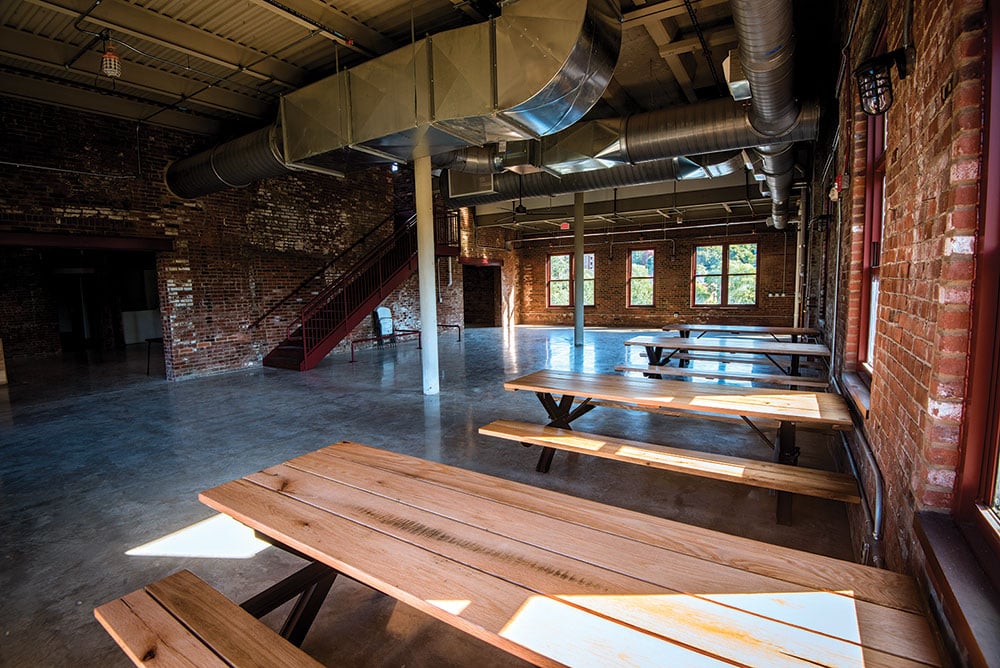The Erie to Pittsburgh Trail Is Being Built Mile by Mile
With a grand vision, dogged persistence and grit, volunteer groups and nonprofits are working to fill in the remaining gaps of the 270-mile Erie to Pittsburgh Trail — and hoping to bring it near completion in five years.
Bill Weller doesn’t break a sweat. He’s biking 40 miles on the Allegheny River Trail, the pristine path he watches over like a protective parent.
Most days, the lean 69-year-old can be found chain-sawing downed trees on the trail. Or digging out ditches clogged with leaves or debris. Or taking 56-mile rides in Venango County from Franklin south to Emlenton and back, with a side trail thrown in.
So on this sunny day, it’s an easy ride as he cruises down the paved trail along the banks of the Allegheny River, glistening with the reflections of the foliage that covers the surrounding foothills. Then he stops at a large railroad marker, 1½ miles south of Franklin.
“It’s 122 miles to Pittsburgh,” says Weller, president of the Allegheny Valley Trails Association.
Most people zoom down Interstate 79 from Erie to Pittsburgh in the car. But Weller is not most people. He hopes to someday bike the 270-mile Erie to Pittsburgh Trail — once it’s completed.
Up and down the state, on trails in cities and remote forests and farmland, volunteers like Weller and community leaders are trying to fill in gaps of that trail, now 70% complete. With the biggest gaps near the two bookend cities, the planned path veers north from the Bayfront in Erie to the southwestern corner of Chautauqua County in New York then winds south through Erie, Crawford, Venango, Clarion, Armstrong, Butler and Allegheny counties in Pennsylvania until it reaches its end at Point State Park. A completed trail would link at the Point to the Great Allegheny Passage and the C&O Towpath, allowing a cyclist to bike all the way from Erie to Washington, D.C. — a continuous 610-mile trek.
Related: Escape to Erie for a Nature-Focused Getaway
The 30.5-mile Allegheny River Trail, one of the longest completed sections, provides spectacular views and access to historical landmarks along the way. With its embrace of ecotourism, Franklin — a former industrial town and county seat of Venango County — has transformed into an official trail town, pumping up its economy.
Near Franklin, signposts in the ground point out landmarks such as Indian God Rock, etched with 50 Native American carvings, and the striking Belmar Bridge, built in 1907 as part of a railroad funded by local oil men Charles Miller and John D. Rockefeller. On a recent day, Weller and Matt Lehman, a retired surgeon and trail association vice president, replaced 24 wooden planks on the bridge.
There’s even a signpost commemorating John Wilkes Booth, whose failed stint as an oilman here preceded his notoriety as a presidential assassin.
At around mile 14, in the village of Sunny Slope, a house blocks the trail. Riders have to turn left onto North Kent Road, a rocky, hilly path that the trail group made passable using a grant. Weller hopes to secure a second grant to pave the section, but he and Lohman zip up the three- quarters of a mile bumpy detour like it’s nothing.
After that, a pair of spooky adventures awaits — the 3,350-foot long Kennerdell Tunnel followed by the 2,860-foot Rockland Tunnel. Both are pitch black inside, requiring a bright bike light. Weller warns about a sharp curve to the left at the end.
“There’s no light at the end of the tunnel,” Weller says grinning.
He relies on volunteers for repairs. “They’re tough,” says Kim Harris, secretary of the Erie to Pittsburgh Trail Alliance.
The Starting Line
Franklin is also where the idea of the trail began. Jim Holden — computer science professor at Clarion University and beef farmer — and fellow Clarion professor David Howes both wanted a safe place to bike. Penn Central had abandoned its line there. The power company that bought the tracks donated 14 miles of land to the trail.
“If you build it, they will come,” Holden would say of starting his own trail of dreams.
Not everyone was sold at first. “I can remember when he first started talking about how trails were going to bring people here — I can’t say they laughed at him, but it was a roll-their-eyes type of thing,” Harris says.
Holden enlisted the help of Weller, a fellow runner and cyclist who operated a tire business in town. Weller knew everyone and could round up volunteers and allay fears — fears that outsiders would invade their bucolic space.
After all, people often move out to small towns to get away from it all. Some of them didn’t want a stinkin’ bike trail abutting their property. What if the cyclists trespassed, even stole things?
Weller would just look at them and say, “Can you imagine the guy on a bicycle with a refrigerator in one hand and the TV in the other, riding on the bike trail?” Despite the ridiculousness of the scenario, he understood the initial resistance to change.
 They also touted the health benefits and economic development that would come from trail tourism, helping Franklin, population 6,031, rebound after most heavy manufacturing left town.
They also touted the health benefits and economic development that would come from trail tourism, helping Franklin, population 6,031, rebound after most heavy manufacturing left town.
Starting in the late 1990s, the trail was built, 5 miles at a time. Once they started walking and biking on it, some of the fiercest critics became volunteers. Once they completed the rail-to-trail path from Franklin to Emlenton, and a beautiful and remote 12-mile offshoot called the Sandy Creek Trail, they thought they were done.
But then Holden figured, why not extend the trail north to Erie and south to Pittsburgh? He never saw that dream come to life; he died at age 73 in 2013.
His memory lives on in Trails to Ales Brewery on the main drag of Franklin. His original bike — an orange Jamis touring bike — is displayed on a shelf above the bar. The brewery, which gets heavy bike traffic in the summer, sells a beer called Holden’s Dream. Five percent of the proceeds from that signature brew benefit the trail.
The goal is “90 by 90” — or 90% of the trail done by 2029, which would have been Jim Holden’s 90th birthday.
Hitting Hurdles
But creating a continuous bike path connecting 38 communities is slow going — like trying to finish a jigsaw puzzle with pieces missing. A beautiful paved or crushed limestone trail comes to an abrupt stop, only to be blocked by obstinate homeowners, a reluctant railroad owner, a geographical blockade. Harris says there is not one single community against the trail, just individual property owners.
“If one guy owns 10 feet of railroad grade, and he says ‘no,’ you are stuck,” Weller says. “So you wait it out.”
As Ron Steffey, former executive director of the Allegheny Valley Land Trust put it, “You do it 1 foot at a time.”
Some 40 miles south of Franklin, Steffey helped build the Armstrong Trails, the 30-mile paved path that runs along the Allegheny River from East Brady through Kittanning to Ford City. The opening of another 10-mile extension from Crooked Creek to Schenley in Armstrong County is slated for April 1.
A former coal miner, Steffey turned to biking after he was injured in a work accident. “I went from coal miner to trail advocate to trail builder to trail consultant and haven’t regretted it,” he says. “It saved me physically, mentally, spiritually.”
But his quest to build the trails faced fierce backlash.
Bikes were buried in the dirt and hung on nooses, dangling ominously from trees, Steffey recalls. Landowners also blocked the trail with fences, gates, barbed wire and logs, any barricade they could find to make a cyclist retreat.
But the biggest obstacle was a 16-year lawsuit. Conrail had stopped running its rail line in Armstrong County, and the land trust bought the land for $250,000. Landowners sued Conrail and the trust, saying the trail had no right to property abutting theirs. Appeals dragged on until the Pennsylvania Supreme Court ruled in 2009 that Conrail had the right to cede the right-of-way to the bike trail organization with the use of the railbanking statutes.
Once they got the green light, Steffey and other volunteers came with tractors and backhoes and built part of the Armstrong Trails and a picturesque offshoot, the 41-mile Redbank Valley Trails, themselves. “It’s heavy labor, but it beats coal mining,” he says. “At least you get to see the sunlight.”
The paved trail that runs through Ford City showcases old industrial landmarks like Pittsburgh Plate and Glass Ford City Works, started by town namesake John B. Ford, one of the founders of the glass company that would become PPG. It also runs through downtown Kittanning, passing trailers with large decks summering along the riverfront, before opening up to river views.
People who once put gates down to block cyclists are clearing trees to let them ride through.
Unfailing Persistence
Farther south in Allegheny County, the trail stops in Harrison Township as it butts up against an active railroad, Norfolk Southern. The Three Rivers Heritage Trail is pushing to extend another 26 miles northward from Millvale to Freeport. While the trail is not fully connected in Allegheny County, more than half of the 26-mile extension is under development, and various smaller segments are completed in Etna, Aspinwall, Blawnox, Brackenridge and Harrison.
“There’s concerns with how close we can get to their tracks,” says Courtney Mahronich Vita, director of trail development and government relations for Friends of the Riverfront, based in Etna.
Connor Spielmaker, spokesman for Norfolk Southern, says the railroad is not opposed to a bike trail per se, but the company needs enough room from the center of the track to operate and maintain the railroad safely. He says there is enough room along certain segments but not others.
The obstacles may look intractable, but trail builders push through with unfailing persistence. It took more than 20 years, for example, to finish one crucial segment of the Great Allegheny Passage — the concrete trail along the edge of Sandcastle Waterpark in West Homestead, says Darla Cravotta, director of community relations and special projects for Allegheny County. The owners of the water park finally granted an easement.
That never-give-up attitude that completed the GAP trail can be applied to Erie to Pittsburgh.
Says Cravotta: “You have to keep your head down and just keep working toward the solution.”
Cristina Rouvalis is a frequent contributor to Pittsburgh Magazine. Her articles have appeared in publications such as Hemispheres, Esquire.com, PARADE, Smithsonian.com, Parents and AARP the Magazine. She is the co-author of “Snoopers & Sneakers,” a middle-grade novel that will be published next year. When she is not typing with one of her two cats on her lap, she can be found biking on the Great Allegheny Passage.





